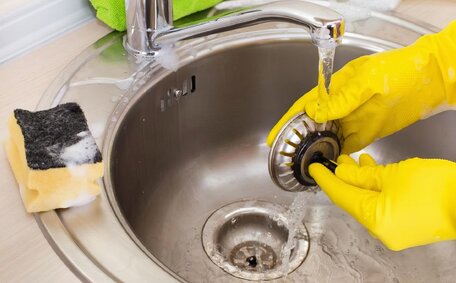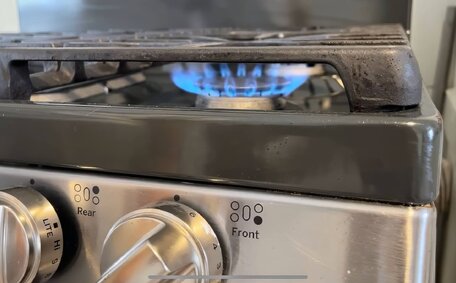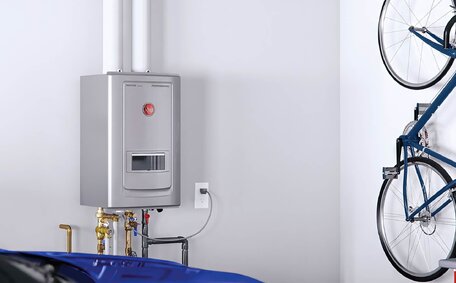Can My Gas Stove Be Used During A Power Outage? Understanding The Capabilities Of Newer And Older Models
Older gas stove models often relied on a pilot light and manual ignition, allowing them to be lit with a match or lighter during a power outage. However, many modern stoves have safety features like electronic ignition or interlocks that require power, thus preventing them from functioning when the power out.
Interlocks are designed to cut off gas flow in the case power failure occurs, acting as an essential safety mechanism. Attempting to override this by manually lighting the burners can allow dangerous gas buildup inside the stove. Refer to your user manual to understand the capabilities of your specific model.
While some newer stoves with battery backups may work during power disruptions, most modern models that require electricity cannot safely be used at all until power is restored. Alternative cooking methods like camp stoves or outdoor grills may be safer options during power outage.
The Interlock Safety Feature On Modern Gas Stoves And What It Means
The interlock, acting as a gas valve, is an important safety device found on most modern gas stoves. It works by cutting off gas flow to the burners if it detects a loss of electrical power.
This prevents gas from unleashing inside the stove when the burners go out, reducing the risk of potentially deadly carbon monoxide poisoning. Attempting to manually override the interlock by lighting the stove during an outage can allow this dangerous gas buildup.
The interlock instills confidence that your stove won’t inadvertently release gas into your living space if power is disrupted. While it may be an inconvenience that prevents cooking when power goes out, this safety feature exists to protect lives.
At Pennant Hills Plumbing, we emphasise that safety should always come first when dealing with some gas appliances. Never try to bypass safety devices like interlocks, especially during outage, and make sure your stove is installed and serviced properly by licenced gas fitters.
How To Safely Light Your Gas Stove Burners Without Electricity
Lighting gas burners on your stove during power outages can be extremely dangerous if safety precautions are not followed. We strongly advise you to check your stove’s user manual or contact a professional plumber before attempting to override electronic ignition or interlocks.
However, even if some models can work during a power outage, should you must light your stove burners manually, follow these safety steps:
- Open doors and windows for ventilation before you light surface burners.
- Each time, check for gas leaks with a soapy water solution first. Bubbles indicate a leak that must be addressed before proceeding.
- Use a lit match or a barbecue lighter, making sure the burner can be ignited safely without bringing your hands/face too close.
- Ensure burner knobs are turned slowly to avoid large bursts of gas when can lit.
- Keep a fire extinguisher on hand. Never leave lit burners unattended.
- If burners repeatedly fail to light or you smell leaking gas, turn everything off immediately and call a technician.
- Never block or override the interlock. Only light burners according to manufacturer guidelines.
Improper manual lighting can result in fire or deadly carbon monoxide accumulation and may not work with the power-wise intentional safety designs. Place safety first and utilise alternative cooking methods if possible during outages. Contact your local licenced professionals like Pennant Hills Plumbing if you require assistance with your appliances.
Why You Should Avoid Using The Oven Portion Of Your Gas Stove During An Outage
Using the gas fireplace portion of a gas stove during a power outage comes with several risks that can get best avoided.
Contemporary gas ovens often require electricity to operate their ignition systems and maintain temperature regulation. Without power, the oven may fail to properly light or maintain steady heat levels.
Gas that continues flowing into an unlit oven can prevent gas appliances from working properly and lead to dangerous carbon monoxide accumulation inside your home. Plus, inconsistent oven temperatures make it difficult to safely cook or warm foods.
Instead of the oven, keep in mind options like space heaters, surface burners, or alternative cooking methods better suited for outages, such as camp stoves, grills, or microwaves if you have a generator. Keep in mind, non-perishable snacks also help avoid foodborne illness from unrefrigerated ingredients.
For your safety, just as websites use cookies for better user experiences, refrain from using any gas appliances lacking manual controls or specified for outage use per the manufacturer. Contact qualified technicians like those at Pennant Hills Plumbing to answer your questions about your appliance capabilities.
Alternative Cooking Methods To Use When The Power And Gas Are Out
When both power and natural gas are out, alternative cooking options are essential. Though inconvenient, safe methods like camp stoves, grills, or even a simple fire pit can cook food when used properly.
Portable propane or gas water heaters allow your appliances to still work seamlessly for cooking most dishes. Outdoor grills, much like tankless water heaters, are also handy for hot water usage when electricity fails. For either method, keep ventilation high and never bring stove tops indoors due to carbon monoxide risks.
Sterno cans warm smaller portions or keep food hot at the table. Fire pits should only be lit outdoors, placing a grill overtop for cooking. Have a fire extinguisher nearby and avoid leaving any fires unattended.
While cumbersome, wondering how long until the power returns, these alternatives beat eating cold food in the dark. Allow extra time for preparation and cooking over makeshift heat sources. Prioritise flashlights over candles for light, ensuring safety remains the top focus until power and gas are restored.
The Dangers Of Carbon Monoxide Poisoning And How To Cook Safely
Carbon monoxide is an odourless, colourless gas that can be deadly if inhaled. Using gas stoves or your water heater to cook or heat your home during a power outage runs the risk of carbon monoxide poisoning if fumes build up inside.
It’s essential for your family to know how warning signs like headache, dizziness, nausea, chest pain, and confusion present themselves. Exposure can be fatal within minutes at high concentrations. Make sure you have working carbon monoxide detectors and get fresh air immediately if you feel symptoms.
To prevent fumes while cooking on an outage-safe gas stove, keep your kitchen ventilated with doors/windows open. Check that burners properly ignite before leaving unattended. If smells persist or detectors alarm, get outside right away and call emergency services.
Consider firepits, grills or camp stoves outdoors instead of using your fireplace or indoor gas appliances lacking electric ignitions or overrides. Never bring generators, propane tanks or charcoal indoors either. Stay alert to carbon monoxide dangers until power and gas utilities are restored.






